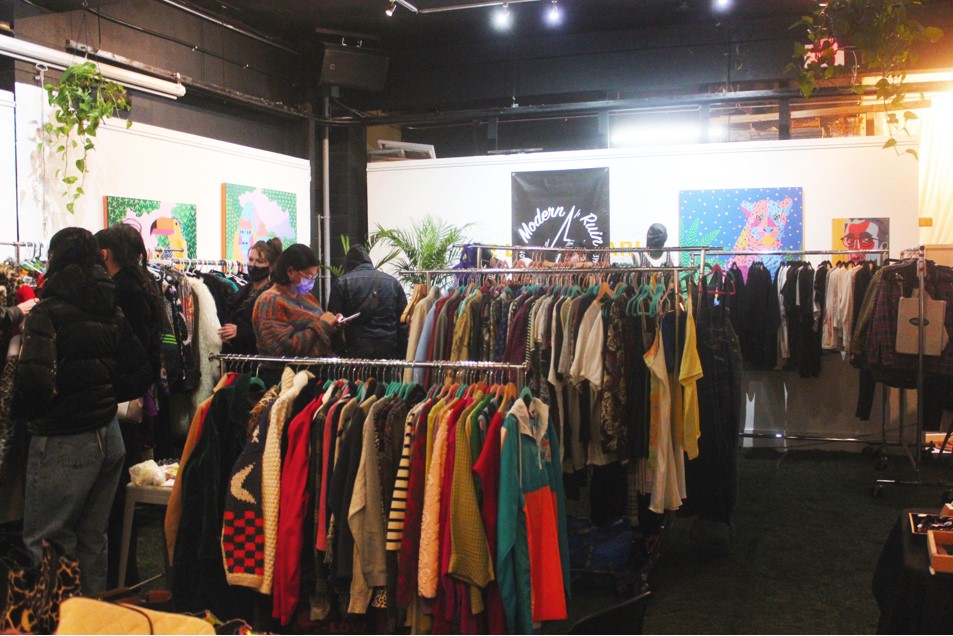
Don’t contribute to the gentrification of used clothing
By CJ Sommerfeld, Staff Writer
Selling clothes that you no longer wear for a reasonable price, is an ethical side-hustle.
Clothing resale apps and vintage pop-ups are no longer a niche aspect of aesthetic expression. Buying and selling used clothes seems to be replacing fast-fashion. Worst of all, greenwashing or not, even fast-fashion megastores are cashing in on this ethical trend. Why not put your own two cents into saving the planet and making some side cash while you are at it? However, before jumping on the vintage side-hustle train, there are some things to consider. But first, I’ll tell you about my own vintage trek.
I started buying and selling used clothes around grade nine before the term side-hustle had become mainstream. It began as a way to both make cash from the clothes which I no longer wore while speeding through the thrift shopping process by swiping through an app. Growing up in a large family that did not have plenty of cash, I was used to sorting through racks at Salvation Army and Value Village for unique pieces, resell apps were simply a digitized and streamlined version of this.
I continued doing this through my teen years but had stopped when adulthood approached. Despite having quit selling my used pieces, I remained faithful to the thrift shop, continuing to accrue a lot of great, one-off pieces—many of which I wound up selling later on. Around 2016, tons of gentrified flea markets and vintage shops popped up on my block. Buying used clothes had quickly transitioned from something which people did out of financial necessity into the mass market. In these shops were thrifted goodies which were selling for a hefty amount more than what the sellers had purchased them for. Part of me felt happy for them that they were making great profits on their pieces. Another, larger part of me, however, felt annoyed at their monopolization of used clothes. I didn’t appreciate this new shift in the market from people who were poor and creative buying these pieces, to those who had the financial means and were jumping on a trend.
I love clothing as means of expression, and I do not believe that this aesthetic art form should be available only for those who have the financial means to do so. That being said, selling clothes that you no longer wear for a reasonable price, is an ethical side-hustle. Around 2018 I did resurge my vintage shop on Depop, listing the hoard of clothes that had succumbed to my closet over the years. Currently, I sell about one item a week, providing a bit of weekly grocery cash while freeing up space in my wardrobe. I always tell my friends to open up a shop of their own.
Tips for morally setting up your vintage side-hustle.
- In order for something to be vintage, it must be at least 20 years old—so, 2001 and older. Y2K—our newest era of vintage—is hot right now, but items made any more recently than that should not be labelled vintage.
- Sell unique pieces relative to what’s out there. I know when I am out vintage hunting for myself, I usually purchase pieces that I have not seen anywhere else. That’s one magic of buying used clothes, having original pieces.
- If an item is not in the best condition, make note of it. If you are selling on an app, note the condition in its description, and if you are selling at a pop-up or other vintage spot, note the flaws on the price tag for the potential buyers to see.
- Do not raid a thrift store and haul a hoard of items to sell—this is my #1 resell pet peeve. Be mindful that there are some people who thrift not because they think that it’s rad, but because that is all they can afford. Anything cheap that is being snagged for resale profits is taken away from people who only have the financial means to buy second-hand. For this reason, I always recommend to mostly sell items out of your own closet which you no longer wear.
- If you are shipping items, use recycled mailers. That is, anytime you receive something in the mail, save it and reuse it to ship your items in. Not only does this cut down on shipping costs by not having to purchase new packages, but it is also environmentally friendly.
- Lastly, do not be an asshole with your prices. Vintage and other preloved pieces should not only be available to those who have the financial means to spend $100 on a tee. If you can take anything from this article: don’t be that vintage seller.

